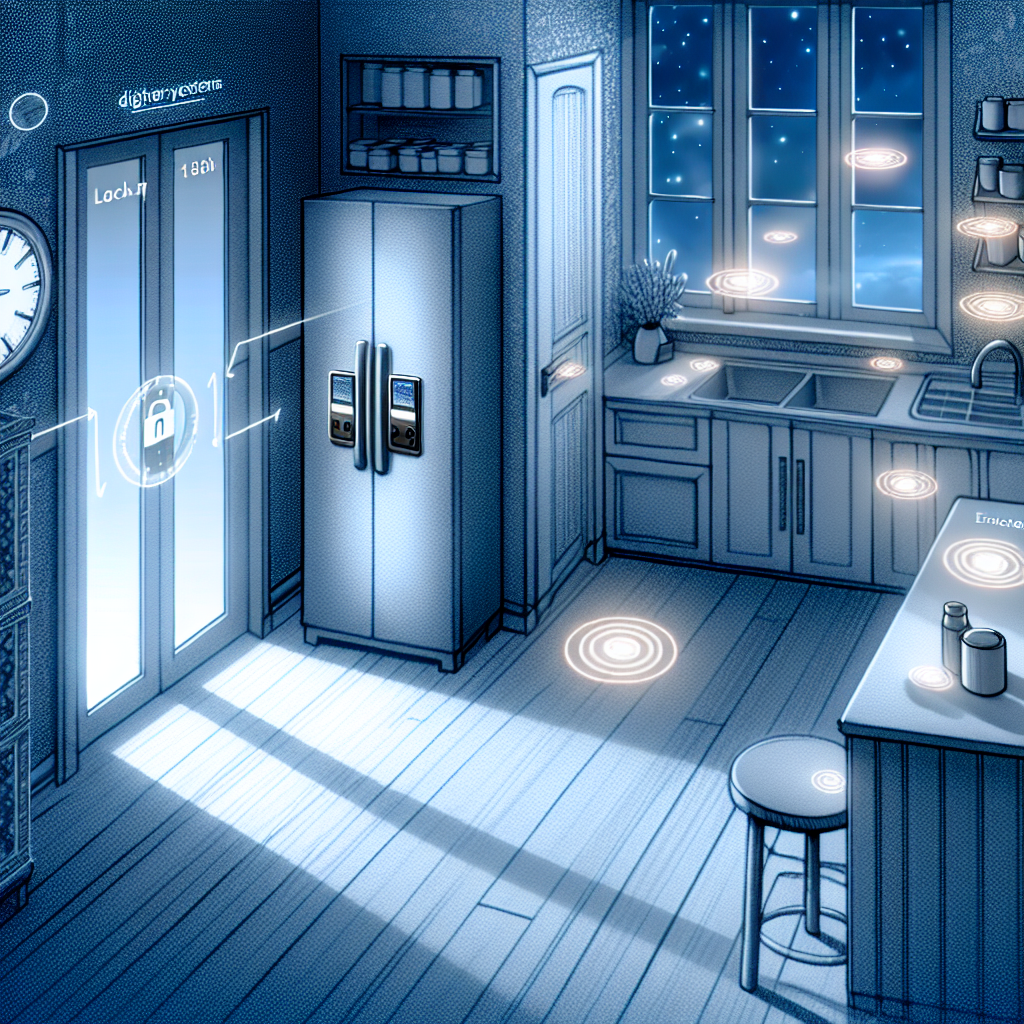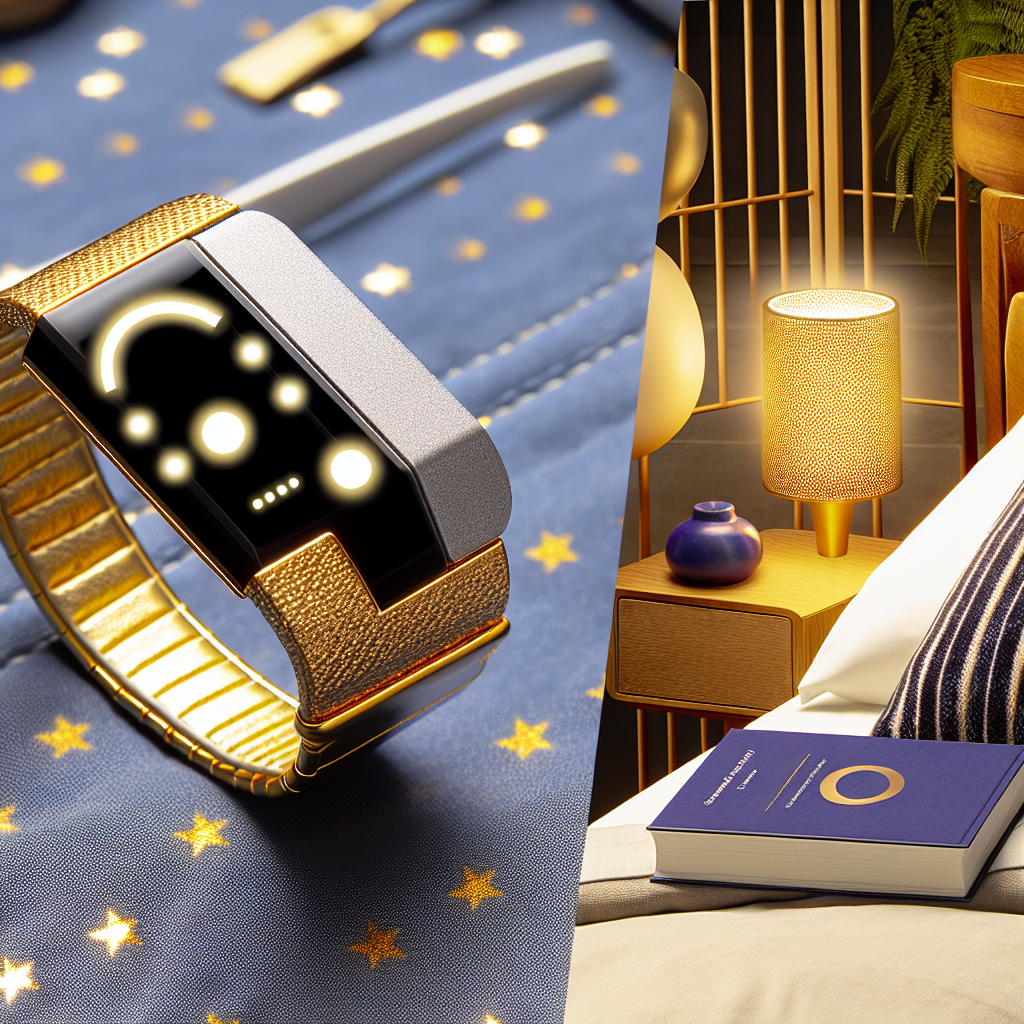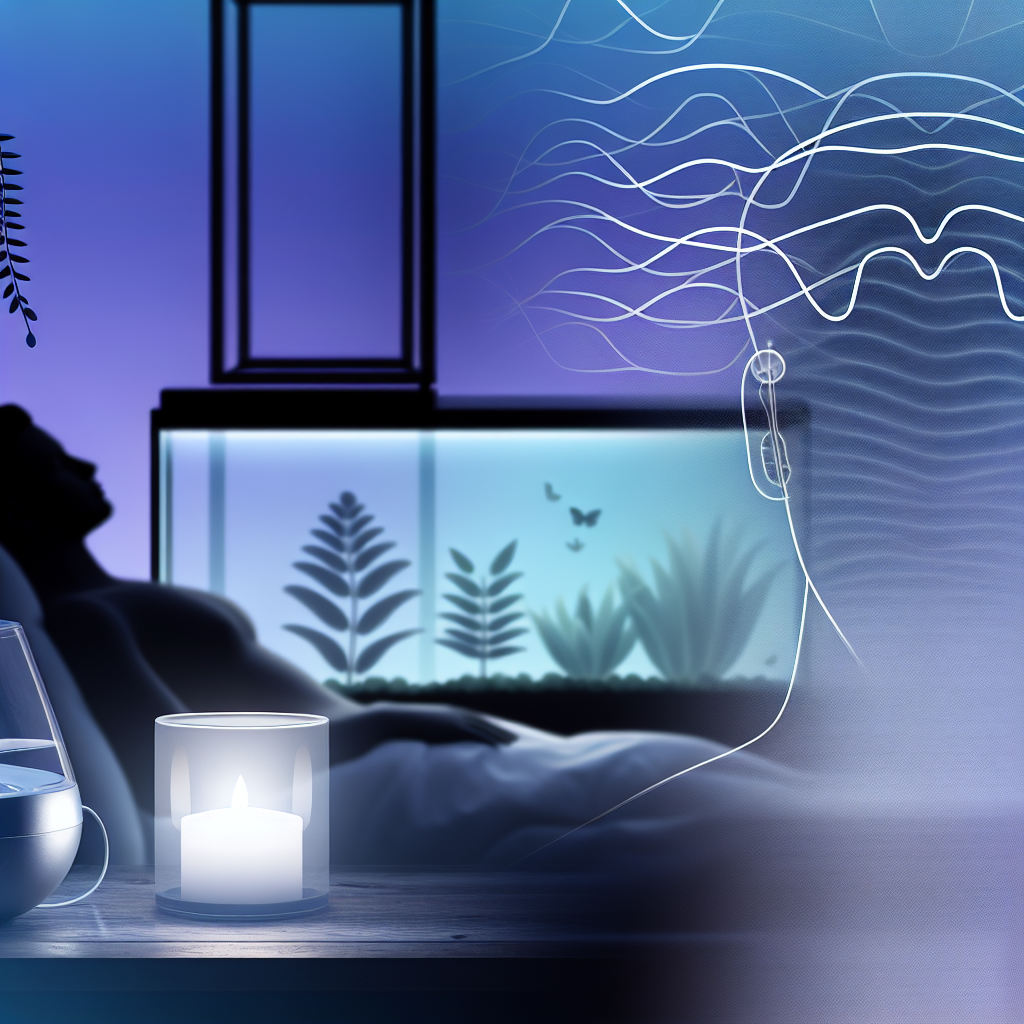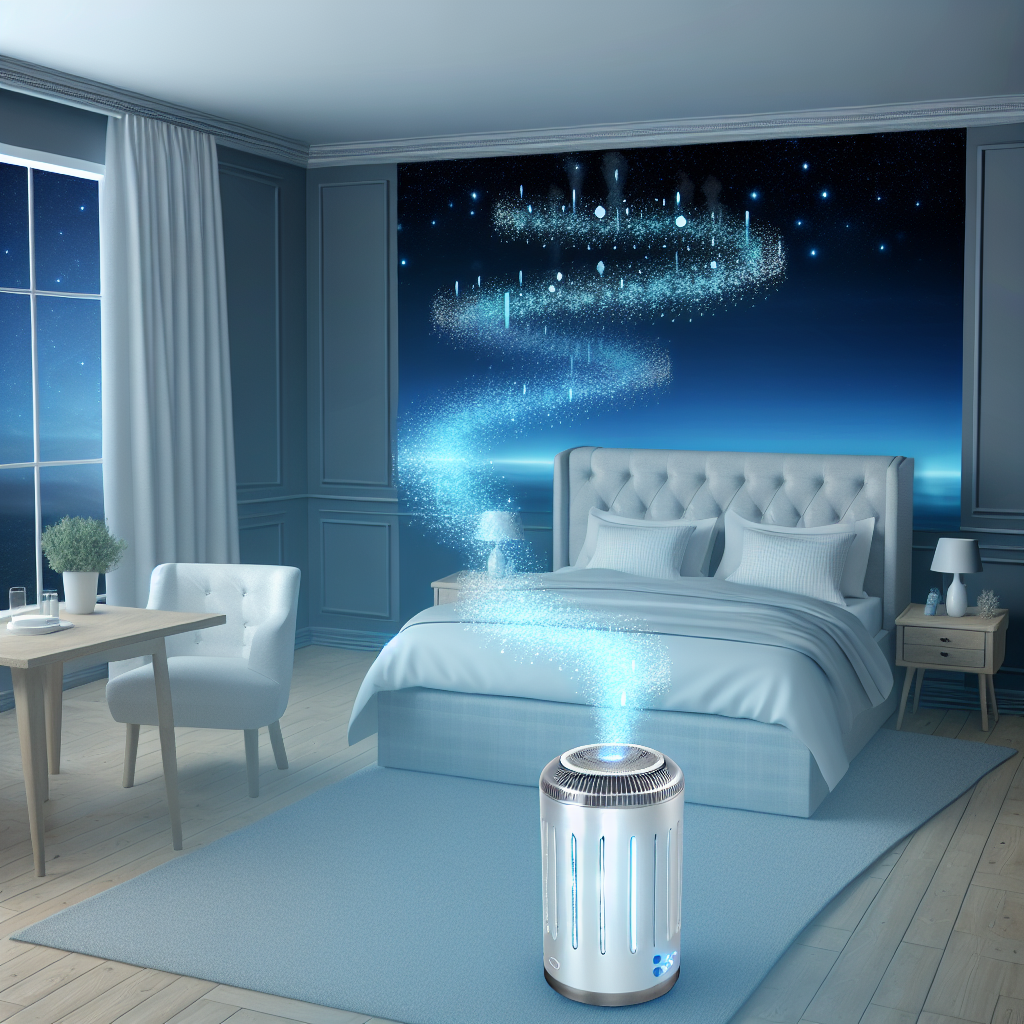Here is the clean, expanded, and formatted WordPress blog article:
Protecting Sleep & Safety: How Kitchen Lock Systems and Sensors Help Manage Sleep-Related Eating Disorder (SRED)
Sleep-Related Eating Disorder (SRED) is a complex parasomnia characterized by recurring episodes of involuntary eating and drinking that occur during partial arousals from sleep. Unlike conscious snacking, individuals with SRED are often completely unaware of their nocturnal eating behaviors and may not remember them afterward. This condition, although relatively uncommon, can have significant detrimental effects on overall sleep quality, physical health, and mental well-being.
SRED is often associated with other sleep disorders such as sleepwalking and restless leg syndrome. It may also be exacerbated by medications like sedative-hypnotics or certain psychiatric conditions, particularly those involving mood dysfunction or anxiety. Most commonly occurring during the non-REM sleep stage, individuals suffering from SRED may consume large quantities of food—sometimes even non-food items like raw meat, butter, or cleaning products—thereby posing potential health and safety hazards.
Compounding the complexity of SRED is its impact on nutrition and metabolism. Involuntary nighttime eating can lead to weight gain, glucose instability, and an increased risk of developing type 2 diabetes or other metabolic disorders. From a psychological perspective, SRED is distressing, especially when associated with embarrassment, food-related anxieties, and confusion about the inability to control nighttime habits.
Given the potential risks from fire hazards (e.g., using stovetops or microwaves while impaired), food-borne illness, or choking, individuals with SRED and their families often seek mechanical and digital solutions for mitigating these risks. Emerging home technologies such as kitchen lock systems and sensors have proven effective in both restricting access to food during vulnerable nighttime hours and alerting caregivers when unauthorized access occurs.
These technological safeguards align with the growing emphasis on individualized treatment approaches in sleep medicine. They offer a practical and immediate intervention strategy while therapeutic treatments such as cognitive behavioral therapy (CBT) and medication remain ongoing. In this article, we’ll explore the innovative use of kitchen lock systems and advanced sensors as a key step in managing Sleep-Related Eating Disorder, shedding light on recent clinical studies and offering practical advice for those coping with this challenging condition.
The Science Behind SRED: What We Know So Far
Although underdiagnosed, SRED is steadily gaining recognition within the medical community. The International Classification of Sleep Disorders (ICSD-3) defines SRED as “recurrent episodes of involuntary eating during the main sleep period,” often accompanied by full or partial amnesia for the events. According to a 2014 study published in the Journal of Clinical Sleep Medicine, the prevalence of SRED in the general population is estimated to be about 1% to 5%, with higher rates among patients with existing sleep disorders or those on psychiatric medications ([Sleep Education](https://sleepeducation.org/sleep-disorders/sleep-related-eating-disorder/)).
Several neurological pathways may be involved in SRED, particularly those regulating hunger, subconscious motor activity, and impulse control. Disruptions to these systems—whether via medication, stress, or sleep deprivation—can lead to abnormal behavior during sleep. These findings underline the role of comprehensive treatment, combining behavioral modification with environmental control measures.
Smart Solutions for SRED: High-Tech Tools Making a Difference
A breakthrough study conducted in 2019 by researchers at Stanford University explored the use of in-home monitoring systems to assess and manage nighttime behaviors in SRED patients. The study demonstrated that motion-activated alarms placed near the kitchen and pantry significantly reduced food-seeking behavior during sleep episodes. Furthermore, participants reported a sense of regained control, decreased anxiety, and improved sleep continuity throughout the intervention period ([National Library of Medicine – PubMed](https://pubmed.ncbi.nlm.nih.gov/)).
Kitchen Lock Systems: The Physical Barriers That Protect Your Sleep
Kitchen lock systems, such as magnetic or infrared motion locks, offer a crucial layer of security for individuals with SRED. These systems can be programmed to restrict access to critical areas—like refrigerators, pantries, and microwaves—during high-risk hours. Many of these systems integrate with popular home automation platforms such as Alexa or Google Home, allowing users to schedule lockdowns during nighttime and receive breach alerts via smartphone.
In particular, caregivers or family members can also receive real-time notifications when motion or tampering is detected. Some systems are customizable and allow biometric access or PIN codes, which can add another protective layer without compromising daily routines.
Sensors and Apps: Real-Time Alerts That Keep You Ahead of the Disorder
Smart sensors integrated with mobile apps have become incredibly effective for nighttime monitoring. These sensors detect movement near food storage zones and send real-time alerts to users or designated caregivers. One case study published in Sleep Science and Practice found that a patient with chronic SRED reduced the frequency of episodes by 85% using a combination of CBT (cognitive-behavioral therapy) and a motion-sensor-based kitchen monitoring system ([BMC Sleep Science and Practice](https://sleep.biomedcentral.com/)).
Not only do these systems offer immediate feedback and control, but they also provide valuable data for healthcare providers. Movement logs and access attempts can help specialists evaluate behavior patterns, medication efficacy, and therapy outcomes over time.
Combining Tech with Therapy: A Holistic Approach to Managing SRED
While kitchen locks and sensors provide front-line protection, long-term recovery from SRED typically requires a multi-pronged approach. Patients are encouraged to maintain a sleep diary, which helps uncover critical triggers, such as medication changes, stress levels, or late-evening meals. This journal, when used in tandem with technology, creates a powerful self-monitoring framework.
Consultation with a certified sleep specialist remains essential. Professionals can recommend medication changes, CBT methods, or additional safety modifications in the home environment. Technology is a supplement—not a substitute—for informed medical care.
Conclusion: A Safer Sleep Is Possible with Innovation & Insight
Sleep-Related Eating Disorder poses serious challenges not only to the individual’s health but also to their sense of autonomy and mental well-being. By understanding this disorder within the greater framework of sleep medicine, families and healthcare providers can develop informed and strategic responses.
Technological solutions such as kitchen lock systems and motion-detecting sensors offer a proactive way to enhance nighttime safety and limit unwanted food consumption. Modern home innovations are proving to be invaluable tools in managing the risks associated with SRED. While not a substitute for medical intervention or therapy, these systems provide a strong supplemental strategy for individuals navigating the stress and complexity of sleep-related eating behaviors.
By combining technology with behavioral therapy and medical oversight, it is possible to significantly improve sleep hygiene, reduce risks, and empower patients toward long-term recovery and better life quality.
References
1. American Academy of Sleep Medicine – Sleep-Related Eating Disorder
[https://sleepeducation.org/sleep-disorders/sleep-related-eating-disorder/](https://sleepeducation.org/sleep-disorders/sleep-related-eating-disorder/)
2. National Library of Medicine – Sleep Disorders Overview
[https://pubmed.ncbi.nlm.nih.gov/](https://pubmed.ncbi.nlm.nih.gov/)
3. BMC Sleep Science and Practice – Case Study in SRED Treatment
[https://sleep.biomedcentral.com/](https://sleep.biomedcentral.com/)
4. International Classification of Sleep Disorders, Third Edition (ICSD-3)
[https://aasm.org/clinical-resources/international-classification-of-sleep-disorders/](https://aasm.org/clinical-resources/international-classification-of-sleep-disorders/)
5. Stanford Health Care – Sleep Medicine Research
[https://stanfordhealthcare.org/medical-clinics/sleep-medicine-center.html](https://stanfordhealthcare.org/medical-clinics/sleep-medicine-center.html)
Concise Summary:
Sleep-Related Eating Disorder (SRED) is a complex sleep disorder characterized by involuntary nighttime eating and drinking, posing significant health and safety risks. Emerging home technologies like kitchen lock systems and motion sensors have proven effective in restricting access to food and alerting caregivers, complementing behavioral therapy and medical treatment for SRED. By combining technological safeguards with a holistic approach, individuals can improve sleep quality, reduce risks, and work towards long-term recovery.

Dominic E. is a passionate filmmaker navigating the exciting intersection of art and science. By day, he delves into the complexities of the human body as a full-time medical writer, meticulously translating intricate medical concepts into accessible and engaging narratives. By night, he explores the boundless realm of cinematic storytelling, crafting narratives that evoke emotion and challenge perspectives.
Film Student and Full-time Medical Writer for ContentVendor.com




